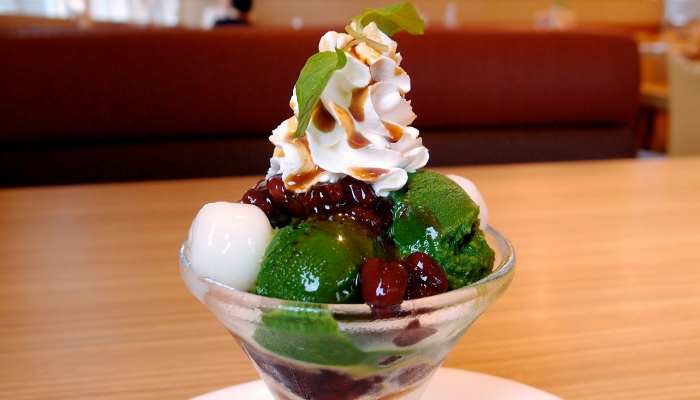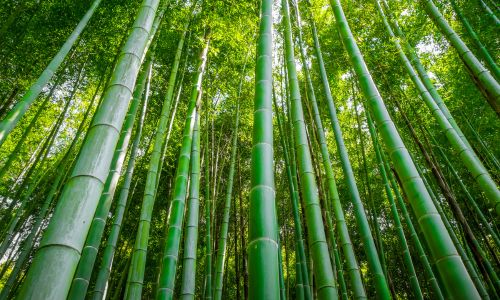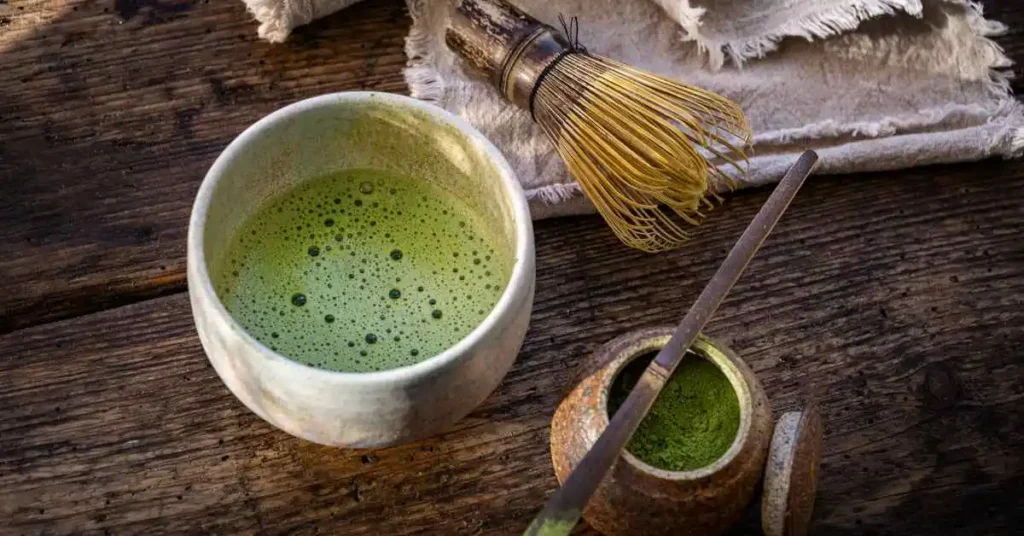Kyoto, the heart of Japan’s tea culture, is also home to the finest Matcha in the world.
Matcha, a vibrant green powder, symbolizes Kyoto’s rich history and outstanding quality.
Exploring Matcha from Kyoto will teach you about its unique production process.
Visitors enjoy a variety of flavours that captivate both locals and tourists.
In the city’s traditional teahouses and contemporary cafes, you can experience Matcha from Kyoto in various forms.
You’ll find Matcha in traditional tea ceremonies and delectable matcha-infused desserts.
Key Takeaways
- Kyoto’s high-quality Matcha plays a significant role in Japanese tea culture.
- Matcha offers numerous health benefits, making it a popular choice for wellness-conscious individuals.
- Kyoto boasts diverse matcha experiences. They range from traditional teahouses to modern cafes that offer innovative matcha-infused treats.
History of Kyoto Matcha
Origins and Cultural Significance
Kyoto Matcha, a finely ground green tea powder, has a long history that spans centuries in Japan.
Matcha originated in Kyoto Prefecture.
Kyoto Prefecture remains one of the few regions producing high-quality Matcha, also known as Uji Matcha.

The unique tea has played a significant role in Japanese culture and tradition.
In its early days, Matcha was not produced in bulk and was considered a symbol of luxury.
Matcha has been an essential part of Japanese tea ceremonies for generations.
These tea ceremonies emphasize rituals and traditions.
The ceremonies focus on the preparation and consumption of Matcha.
The popularity of Matcha in Japan began to grow during the Edo period.
During the Edo period, many cultural practices developed and the arts flourished.
These developments influenced the appreciation for Matcha and the tea ceremony.
As you learn more about the history of Kyoto Matcha, you’ll discover how intertwined it is with Japan’s rich cultural traditions.
Matcha Production
Growing and Harvesting Process
The matcha production process begins with carefully cultivating and harvesting tea leaves.

The tea plants are grown in the shade for about three to four weeks before harvest.
Shade growing slows the plants’ growth, resulting in a deeper, richer green colour in the leaves.
Farmers handpick the finest young tea leaves.
Then, they lay them out to dry to reduce the moisture content, preparing them for further processing.
From Leaves to Powder: The Making of Matcha
Transforming these dried leaves into matcha powder requires multiple steps:
- The leaves are deveined and destemmed, leaving only the most tender parts.
- After processing, the leaves, known as tencha, are ground using traditional stone mills. This grinding method preserves the rich green colour and nutrient content. It also ensures a consistent powder texture.
- Finally, the Kyoto Matcha powder is packaged and ready for shipping.
Shade-Growing Technique
One of the key factors that sets Matcha apart from other types of tea is the shade-growing technique.
Limiting the plants’ exposure to sunlight produces higher levels of chlorophyll and theanine.
Matcha has a distinctive bright green colour.
It has a smooth, umami-rich flavour because of higher levels of chlorophyll and theanine.
Types of Kyoto Matcha
Kyoto is famous for its high-quality Matcha.
This region has two main types:
Ceremonial Grade Matcha and Culinary Grade Matcha.
These two types of Matcha are distinguished by their quality, flavour, and recommended uses.
Ceremonial Grade Matcha
This is the highest quality matcha produced in Kyoto.

This Matcha is known for its vibrant green colour, rich umami flavour, and smooth texture.
People use Ceremonial Grade Matcha in traditional tea ceremonies and make it from the youngest tea leaves.
These youngest tea leaves are handpicked and stone-ground to create a fine powder.
You’ll find two types of Ceremonial Grade Matcha: usucha (thin tea) and koicha (thick tea).
Usucha is the more common type, with a lighter consistency and flavour.
You can prepare usucha by whisking one teaspoon of matcha powder with about 2 ounces of hot water.
In contrast, koicha is prepared with less water and more matcha powder.
It has a more intense flavour and yields a thicker, paste-like consistency.
Culinary Grade Matcha
Mature leaves produce Culinary Grade Matcha.
This grade is ground into a coarser powder than Ceremonial Grade Matcha.

Although it still has high quality and flavour, Culinary Grade Matcha is better suited for cooking and baking.
It’s especially popular for making various sweet and savoury dishes, such as:
- Matcha Ice Cream
- Matcha Lattes
- Matcha Smoothies
- Matcha Cookies
- Matcha Soba Noodles
Culinary Grade Matcha has a slightly more robust flavour and can be more affordable.
Experiment with Culinary Grade Matcha in recipes to enhance your dishes with colour, flavour, and health benefits.
Kyoto’s Matcha Cafes and Teahouses
Iconic Matcha Cafes
Kyoto is famous for its matcha tea, and various cafes serve this delightful drink.
One such cafe that you should visit is Nakamura Tokichi Honten.

Nakamura Tokichi Honten is located in Uji.
It is recognized as the ‘Best Matcha Cafe in Kyoto.’
It is also the ‘Overall Winner.’
This café’s use of Matcha harvested from its tea gardens ensures an unparalleled experience.
Tsujiri Tea House, located in Gion City Center, is another notable café.
Tsujiri Tea House specializes in traditional Japanese matcha treats. Its blend of modern amenities and traditional charm ensures an unforgettable visit.
Traditional Teahouses
In addition to cafes, Kyoto boasts several traditional teahouses where you can savour authentic Matcha.
One notable example is Shimizu Ippoen, a teahouse that has preserved its heritage since 1945.
Shimizu Ippoen specializes in matcha parfaits.
They use fresh matcha powder from Kyoto Prefecture.
Additionally, the time-honoured Saryo Suisen is another teahouse worth visiting.
Saryo Suisen offers an exquisite selection of matcha treats.
They capture the authentic essence of Kyoto’s matcha culture.
Matcha Sweets and Desserts
Innovative Matcha Confections
One popular dessert incorporating matcha is the matcha parfait.

These multi-layered delights typically include matcha ice cream, jelly, whipped cream, and fruits.
Shaved ice desserts, infused with the distinct flavour of Matcha, are another delightful option.
In Japan, this type of shaved ice is kakigori.
Combined with Matcha, kakigori becomes a cooling and refreshing treat, perfect for hot summer days.

Another innovative matcha dessert is the Matcha tiramisu.
This classic Italian dessert receives a unique Japanese twist with Matcha.
Matcha tiramisu features a rich layer of Matcha.
It offers a unique balance of flavours with the traditional coffee component.
Popular Matcha Desserts
Kyoto also features more traditional matcha sweets that have become popular worldwide.
Matcha ice cream, arguably the most famous matcha dessert, combines the creamy texture of ice cream with the earthy flavour of green tea.

You can find a variety of matcha ice cream desserts in Kyoto, from simple scoops to elaborate creations with beautiful garnishes.
Matcha jelly is another popular way to enjoy the delicate taste of green tea.
It offers a delightful and unique texture when served with fruits or other sweet accompaniments.
Kyoto’s version of warabi mochi, a traditional Japanese dessert, is another matcha treat to discover.
They make this chewy dessert from bracken starch and coat it with matcha powder.

Tea shops and cafes throughout the city showcase Matcha’s versatility with this dessert.
They also serve it in many other delicious forms.
Kyoto’s Matcha Souvenir Shops
Matcha-Themed Gifts and Treats
Kyoto is home to numerous souvenir shops offering a vast selection of matcha-themed items.
These matcha-themed items are perfect for gifting or personal enjoyment.
One prominent matcha store in Kyoto is Nakamura Tokichi.
Nakamura Tokichi is known for its handmade Japanese sweets and matcha-infused treats.
Nakamura Tokichi has several branches.
Another notable shop in Kyoto is Tsujirihei Honten, which specializes in matcha and matcha sweets. Tsujirihei Honten is known for its cosy atmosphere.
Visitors can indulge in delightful Matcha treats there.
It’s the perfect place to unwind with matcha treats after a day of exploring the city.
For a unique matcha experience, consider visiting Jouvencelle.
Jouvencelle uniquely combines traditional Japanese Matcha with French-inspired desserts.
These fusion treats make for an eye-catching and delicious souvenir option.
Here’s a list highlighting some must-buy Matcha souvenirs from Kyoto:
- Matcha green tea powder: A versatile staple for making tea, lattes, or baked goods.
- Matcha chocolates: Irresistible green tea-flavoured chocolates for your sweet-tooth cravings.
- Matcha cookies and biscuits: Shareable treats with a delightful crunch and matcha twist.
- Handmade Japanese sweets: Artisanal sweets blending traditional flavours and craftsmanship, like Yatsuhashi.

Kyoto Matcha Tourism
This section will explore ways to experience Kyoto’s matcha scene.
Matcha Experience Tours
One of the best ways to immerse yourself in Kyoto’s Matcha culture is by joining a Matcha experience tour.
You can participate in hands-on activities like Matcha tea ceremonies on these tours.
You can also take part in Matcha-making workshops.
Along the way, you’ll learn about the history and techniques of producing and enjoying this traditional Japanese drink.
While exploring the city, remember to visit some of Kyoto’s iconic landmarks.
A few must-see sites include:
- Kiyomizu-dera, a stunning temple, ranks among Kyoto’s most-visited places. After exploring nearby Matcha shops, enjoy the city’s panoramic view from the temple’s wooden terrace.
- Kyoto Station: A modern architectural marvel, Kyoto Station is a transportation hub and shopping centre. Here, you’ll find a variety of matcha cafes and shops to indulge in delicious Matcha treats.
Visiting Kyoto’s Matcha Landmarks
Our Kyoto matcha adventure would only be complete by visiting the following landmarks.
Arashiyama Bamboo Forest: This enchanting forest is a unique backdrop for a peaceful Matcha experience.

Nearby tea houses offer the chance to savour a cup of Matcha amidst the bamboo groves.
Located in Uji, Byodo-in Temple is a UNESCO World Heritage Site.
It is a stunning piece of architecture and a significant matcha destination.
Uji is known for its high-quality Matcha production.
The city surrounds the temple and offers plenty of matcha-flavored treats.
Yasaka Shrine: This famous shrine in Kyoto’s Gion district hosts the annual Gion Matsuri festival.

While visiting, explore the surrounding area.
Look for tea houses that offer authentic Japanese tea experiences.
Matcha Product Innovations
Emerging Matcha Products
In recent years, the Matcha landscape has grown considerably.
This growth has led to the emergence of various innovative matcha products.
Kyoto offers an assortment of matcha-flavored snacks, including KitKats and cookies.
Matcha has infused Matcha Beverages, such as lattes, smoothies, and cocktails.

This caters to a growing interest in unique and healthy beverages.
Final Words
Kyoto’s Mtcha brands and products continue to thrive and evolve.
They combine traditional roots and innovative adaptations, catering to diverse consumer preferences.
Make sure to try them out on your visit.

